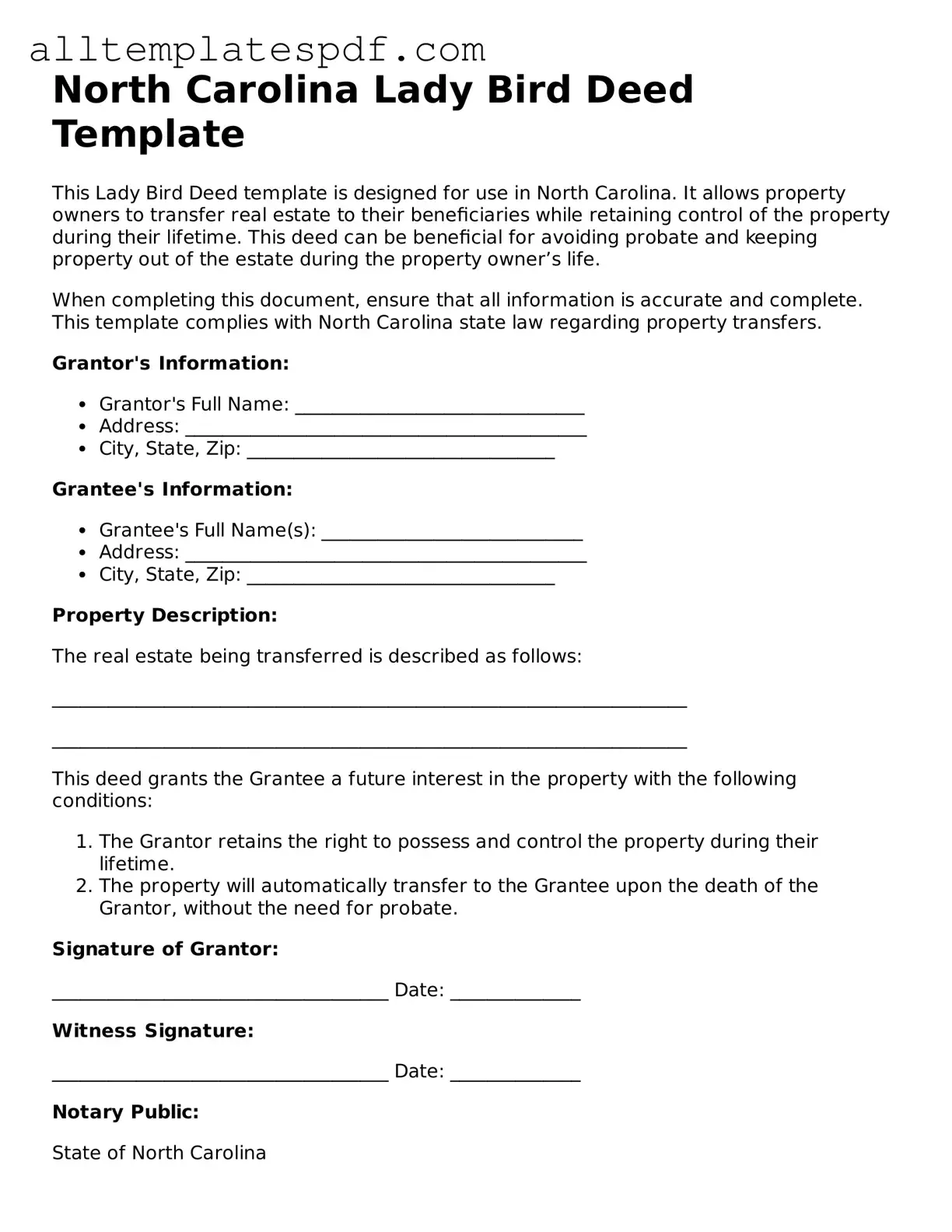Filling out the North Carolina Lady Bird Deed form can be a straightforward process, but several common mistakes can lead to complications. One frequent error is failing to include all necessary parties. It's essential to list both the grantor and the grantee accurately. Omitting a spouse or co-owner can create issues later on, especially in matters of property rights and inheritance.
Another common mistake involves incorrect legal descriptions of the property. The form requires precise information about the property being transferred. Relying on vague descriptions can lead to confusion and potential legal disputes. Always verify the legal description with the county tax office or a property deed to ensure accuracy.
Many people neglect to sign the document in the appropriate places. A Lady Bird Deed must be signed by the grantor, and any missing signatures can render the deed invalid. Additionally, witnesses may be required, depending on local laws. Failing to adhere to these requirements can complicate the transfer process.
Not having the deed notarized is another mistake that can undermine the document's validity. In North Carolina, notarization is often necessary to ensure that the signatures are authentic. Without a notary's acknowledgment, the deed may not hold up in court.
Individuals sometimes forget to record the deed with the county register of deeds. Recording is crucial because it provides public notice of the property transfer. Without this step, future buyers or creditors may not be aware of the new ownership, leading to potential conflicts.
Another error is not considering tax implications. While a Lady Bird Deed allows for the avoidance of probate, it can still have tax consequences. Failing to consult with a tax professional may result in unexpected liabilities for the grantor or the grantee.
Some people may not understand the implications of retaining a life estate. A Lady Bird Deed allows the grantor to retain certain rights, but misunderstanding these rights can lead to misuse or unintended consequences. It's vital to fully grasp what rights are retained and how they affect future ownership.
Additionally, individuals may overlook the need for clear instructions regarding the transfer of the property upon the grantor's death. If the language is ambiguous, it can lead to disputes among heirs. Clarity in the deed's terms is essential for a smooth transition of ownership.
Failing to review the completed form thoroughly before submission is a common pitfall. Simple typographical errors can have significant implications. A careful review can catch mistakes that might otherwise complicate the transfer process.
Lastly, individuals sometimes underestimate the importance of seeking legal advice. While many people feel confident filling out the form themselves, consulting with an attorney can provide valuable insights and help avoid costly mistakes. Legal professionals can offer guidance tailored to individual circumstances, ensuring that the deed serves its intended purpose.
